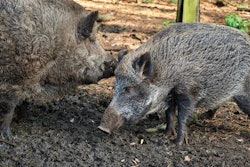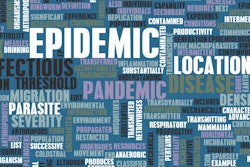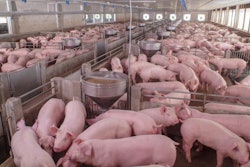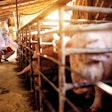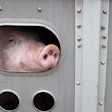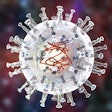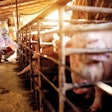
Officials in Indonesia have confirmed the presence of the African swine fever virus in dead pigs, bringing the number of countries in the Asia-Pacific region reporting the disease to 12.
The number of outbreaks of ASF in the Philippines has risen to 40 with the confirmation of cases at 24 new locations to the World Organisation for Animal Health (OIE).
All occurred on the island of Luzon between August 19 and October 8, according to the official report from the agriculture ministry. From commercial farms and backyard herds, a total of more than 40,000 pigs were lost to the disease through mortality or culling in these outbreaks.
Worst affected by the latest outbreaks was the province of Bulacan, where the disease was confirmed at 13 locations. Nine more were in Pampanga, and others were in the Metro Manila areas of Malabon City and Caloocan City.
Since the country’s first confirmed cases in July, the disease has also been detected in the Luzon island provinces of Rizal and Pangasinan, and in Quezon City, according to official reports. Total losses of pigs are approaching 48,700.
Philippines introduces ASF zoning scheme
Several regions of the Philippines have banned the import of any pig or pork products from Luzon. The ban includes processed pork products, as the ASF virus is resistant to heat treatments, reports Philippine Information Agency (PIA).
Around 10% of the illegal pig meat products from ASF-infected countries seized at ports and airports this year tested positive for the ASF virus, according to PIA. The virus was even detected in canned pork products, indicating that even the heat applied during canning does not render pig meat free of the infection.
Last week, the agriculture ministry said that ASF had been spread from China to the Philippines in smuggled pork products, reports ABS-CBN. Agriculture Secretary William Dar made the allegation following the earlier discovery of pig meat among mislabeled food products in a shipment of goods from China.
ASF controls are being stepped up in the Philippines, according to the same source. As a zoning scheme, Visayas and Mindanao will be declared free of the disease and able to send their products to all other regions. Surveillance will be intensified in a further six areas where no outbreaks have so far been reported.
More wild boar test positive for ASF in South Korea
Seven more wild boar from South Korea’s border area with its northern neighbor have tested positive for the ASF virus. According to the latest report from the South Korean agriculture ministry to the OIE, four animals were located in Gyeonggi province, and three in Gangwon. Previous cases have been confirmed in both provinces since the first outbreak in mid-September.
The number of ASF-infected wild boar found in South Korea has now reached 22, according to Yonhap. As no new cases have been detected in domestic pigs since October 9, the number of affected farms remains at 14.
Officials say it is too early to claim the disease is under control. More than 300,000 pigs have already been culled in South Korea, and a further 70,000 will be slaughtered, reports the same source. To maintain the country’s domestic pork supply, the agriculture ministry has purchased 65,000 pigs for later consumption.
Further outbreak in Russia’s Far East
The number of ASF outbreaks in the Far Eastern Federal District of Russia has risen to 41 since the end of July. Cases have been found among wild boar and domestic pigs.
Latest cases were detected at the end of October among a backyard herd of 113 pigs in in Amur oblast.
ASF ‘resolved’ in 5 regions of China; 326,000 pigs lost to disease
After a period without new cases of ASF, China’s agriculture ministry has reported to the OIE that the ASF situation has been “resolved” in Jiangsu, Qinghai, Tibet, Hainan and Beijing.
In each area, culling of infected and nearby animals was followed by intense surveillance over the next six weeks. When no virus-positive samples were found, restrictions were lifted in each area.
Based on these official reports to the OIE alone, 129,043 pigs died as a direct result of the infection at affected premises. In addition, more than 197,000 from nearby herds were culled in order to stop the further spread of the disease.
Indonesia detects ASF, classical swine fever
After reports of suspicious mortality of pigs in the North Sumatra province of Indonesia, local investigations have identified viruses of ASF and classical swine fever (CSF). More than 4,000 pigs are thought to have died, reports Channel News Asia. Authorities in the province have been observed retrieving pig carcasses from rivers in which they appear to have been discarded.
Symptoms and lab results point to ASF, but samples are also positive for CSF, according to an official at the agriculture ministry. CSF was first detected in September in the province’s Dairi district, he said.
Australia to control feral pig population
Should ASF ever enter the country, Australia sees its population of feral pigs as a threat to the spread of the disease.
Such is the concern over this threat that the federal agriculture ministry has announced it will appoint a “feral-pig supremo,” reports Sydney Morning Herald. Cost of the initiative is AUD1.4 million (US$961,000) over the coming three years.
Roaming over almost half of the country, an estimated 25 million wild pigs already cause damage estimated at AUD14.5 million a year through production losses.
The new coordinator will be based within the industry body, Australian Pork Ltd. Its chief executive estimates that ASF could cost the industry up to AUD2 billion.
Two Australian states have already prepared for a mass cull of feral pigs.
Since 2018, ASF had already been confirmed by 11 Asian nations — including Russia’s Far Eastern Region — and led to the direct loss of almost 4.27 million pigs through mortality or the destruction of infected herds. These figures are included in the latest report from the OIE on the ASF situation in Asia and the Pacific, updated at the end of October.
Within Europe, ASF is highly likely to spread eastward to affect new countries within the next 12 months, according to a new study. The structure of the pig sector and the lower wild boar population combine to make it much less likely that ASF will spread in a westerly direction over the same time period.
View our continuing coverage of the African swine fever outbreak.


